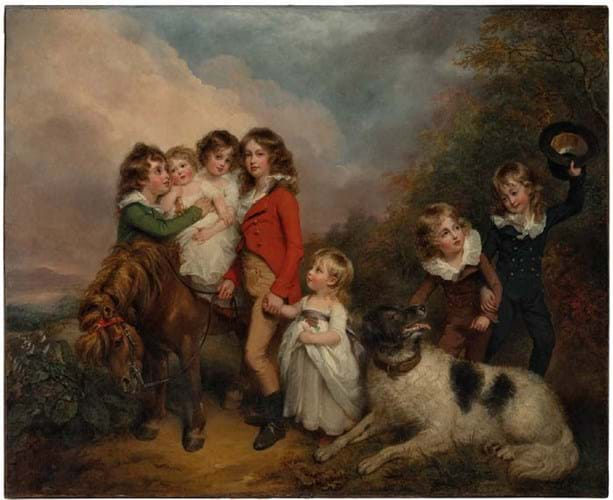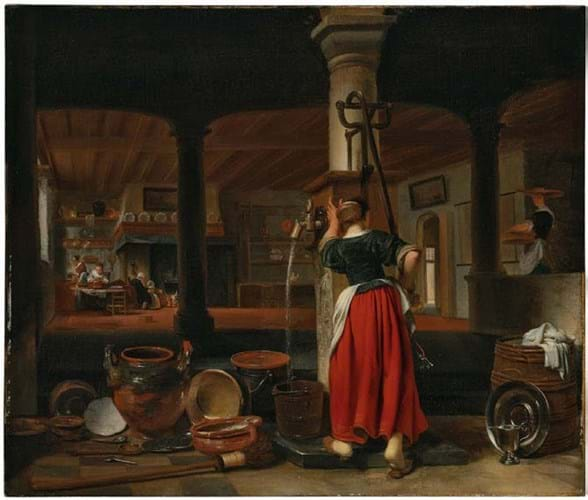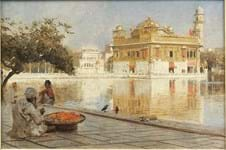Leading the sale was an early 20th century oil of Notre-Dame by Francis Picabia (1879-1953), one of four works in the sale painted in the Impressionist style some years before the artist’s immersion in the Dada movement. It had been acquired by David Montagu before 1970 and hung in the family dining room in London.
Titled Notre-Dame, effet de soleil and signed and dated, Christie’s considered this 2ft 5in x 3ft (73 x 92cm) oil to be ‘one of the great works from Francis Picabia’s Impressionist period’ and the audience did seem to concur. Helped by the subject matter, it sold for £410,000 against an guide of £200,000-300,000.
Seven survivors
A large early 19th century family portrait by Arthur William Devis (London 1762-1822) had been inherited by Lord Swaythling from his grandmother, Gladys Montagu, née Goldsmid (1879-1965).
The 7ft x 8ft 8in (2.15 x 2.64m) canvas depicts the children of Benjamin Goldsmid (1755-1808), the son of a Jewish-Dutch émigré who moved to London from Amsterdam in 1763, who – along with his brother Abraham – was the first bill broker in the City of London. The brothers flourished swiftly, raising money in the Netherlands for the profligate Prince of Wales and sating the need for huge government borrowing during a protracted period of war with revolutionary France.
Benjamin had married Jessie Salomons, daughter of a wealthy East India merchant, who brought a dowry of £100,000. Together they had seven children who survived infancy, all seen here.
The portrait, dated 1800, would have been commissioned to hang in the new Goldsmid family home Elm Grove, Roehampton, Surrey, as indicated by the inscription Goldsmid Roehampton on the dog’s collar. Purchased in 1798, the large estate comprised 150 acres, which included a small farm that had the honour of growing the corn used by the Chief Rabbi of his private synagogue to make his Passover bread.
With an estimate of £80,000-120,000, the work got away at £160,000.
Devis is best known for his role in the ‘cult of Nelson’. He painted the admiral in life on a number of occasions and was present at the autopsy of Nelson’s body conducted when the Victory returned from Trafalgar. The most recent painting by the artist to break six figures at auction was a portrait of Nelson (£100,000 at Christie’s in July 2015).
Sold at £130,000 (estimate £50,000- 80,000) was a Dutch 17th century oil of domestic life that had been purchased for the family by Samuel Montagu, 1st Baron Swaythling (1832-1911).
At the time the 2ft 4in x 2ft 9in. (71 x 84 cm.) painting of a maid pumping water in a kitchen interior was attributed to Nicolaes Maes and exhibited at the Royal Academy as such, but later research has reattributed it to his fellow Dordrecht painter Cornelis Bisschop (1630-74).
















